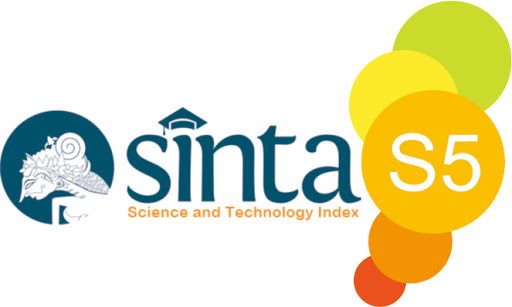Risk Of Sharia Banking In Indonesia: Viewed From Types Of Financing
DOI:
https://doi.org/10.21580/al-arbah.2020.2.1.5669Keywords:
credit risk, financing agreement, macroeconomic variables, banking specific variables, autoregression vector.Abstract
Abstract
Purpose - This study aims to analyze the influence of macroeconomic variables and specific variables of the bank on sharia bank credit risk in Indonesia based on the type of financing agreement. Islamic bank credit risks based on financing agreements consist of credit risk based on profit sharing, receivables and rent.
Method - This study uses secondary time series data. The data used is the data of Sharia Commercial Banks in Indonesia from January 2015 to March 2019. The data analysis method uses Vector Autoregression (VAR) with Eviews 10 software tools.
Result - Based on the results of the impulse response, the impact of shock on macroeconomic variables and banking-specific variables on sharia bank credit risk in general is almost the same except for credit risk based on rent in certain variables. Judging from the variance decomposition, in general the CAR variable has the greatest influence on the risk of Islamic bank credit in Indonesia.
Implication - There must be an acceleration in strengthening the capital structure of Islamic banks in Indonesia.
Originality- This research fills in the blanks about syariah bank credit risk based on the type of financing agreement.
Downloads
References
Ajija, S.R, Dyah W. Sari, Rahmat H. Setianto dan Martha R. Primanti. (2011). Cara cerdas menguasai Eviews, Jakarta: Salemba Empat.
Akram, H., and Khalil ur Rahman. (2018). “Credit risk management a comparative study of Islamic banks and conventional banks in Pakistan”. ISRA International Journal of Islamic Finance. Vol. 10 No. 2.
Arsana, I Gede Putra. (2006). VAR course with Eviews 4. Jakarta: Laboratorium Komputasi Ilmu Ekonomi Universitas Indonesia.
Balala, M.H. (2011). Islamic finance and law; theory and practice in a globalized world. New York: Palgrave Macmillan.
Basel Committee on Banking Supervision. (2001). Risk management practices and regulatory capital: cross-sectorial comparison. Switzerland: Bank for International Settlements.
Chamberlain, T., Sutan Hidayat and Abdul Rahman Khokhar. (2019). “Credit risk in Islamic banking: evidence from the GCC”. Journal of Islamic Accounting and Business Research.
Duffie, Darrelland Kenneth J. Singleton. (2003). Credit risk; pricing, measurement, and management. New Jersey: Princeton University Press,
Effendi, K.A. and Rozmita Dewi Yuniarti. (2018). “Credit risk and macroeconomics of Islamic banking in Indonesia”. Journal of Smart Economic Growth. Vol. 3, No. 1.
Enders, W. (2015). Applied Econometric Time Series. New York: John Wiley and Sons Inc.
Elgari, Mohamed Ali. (2003). “Credit risk in Islamic banking and finance.Islamic Economic Studies”. Vol. 10, No. 2.
Ferhi, Afifa. (2017). “Credit risk and banking stability: a comparative study between Islamic and conventional banks”. International Journal of Law and Management. Vol. 60 No. 4.
Greuning, H.V. And Sonja Brajovic Bratanovic. (2009).Analyzing banking risk a framework for assessing corporate governance and risk management. Washington, D.C: The International Bank for Reconstruction and Development/ The World Bank.
Gujarati, D. N. (2004). Basic Econometrics. The McGraw-Hill Companies.
Jorion, Philippe. (2009). Financial risk manager handbook. New Jersey: John Wiley & Sons, Inc.
Misman, F.N, Ishaq Bhatti, Weifang Lou, Syamsyul Samsudin and Nor Hadaliza Abd Rahman. (2015). “Islamic banks credit risk: a panel study”. Procedia Economics and Finance 31, 75–82.
Mpofu,T.R. and Eftychia Nikolaidou. (2018). “Determinants of credit risk in the banking system in Sub-Saharan Africa”. Review of Development Finance 8, 141–153.
Mukhtarov, S., Serhat Yüksel and Elvin Mammadov. (2018). “Factors that increase credit risk of Azerbaijani banks”. Journal of International Studies, 11(2), 63-75.
Sundararajan, V. and Luca Errico. (2002), “Islamic financial institutions and products in the global financial system: key issues in risk management and challenges ahead”, IMF Working Paper. Vol. 2 No. 192.
Uda, N.A.Z. @, M.A. Hamid and Hawati binti Janor. (2018). “Determinants of credit risk in Islamic and conventional bank: evidence from Malaysia”. International Journal of Academic Research in Business and Social Sciences, 8(6), 1054-1068.
Wiryono, S.K and Kharisya Ayu Effendi. (2018). “Islamic bank credit risk: macroeconomic and bank specific factors”. European Research Studies Journal, Volume XXI, Issue 3, 53-62.
Yurdakul, Funda. (2014). “Macroeconomic modelling of credit risk for banks”. Procedia - Social and Behavioral Sciences 109, 784–793.
Downloads
Published
Issue
Section
License
Authors who publish with this journal agree to the following terms:
Authors retain copyright and grant the journal right of first publication with the work simultaneously licensed under a Creative Commons Attribution-NonCommercial-ShareAlike 4.0 International License. that allows others to share the work with an acknowledgement of the work's authorship and initial publication in this journal.
Authors are able to enter into separate, additional contractual arrangements for the non-exclusive distribution of the journal's published version of the work (e.g., post it to an institutional repository or publish it in a book), with an acknowledgement of its initial publication in this journal.
Authors are permitted and encouraged to post their work online (e.g., in institutional repositories or on their website) prior to and during the submission process, as it can lead to productive exchanges, as well as earlier and greater citation of published work (See The Effect of Open Access).
Licensing

This work is licensed under a Creative Commons Attribution-NonCommercial-ShareAlike 4.0 International License.



.png)



